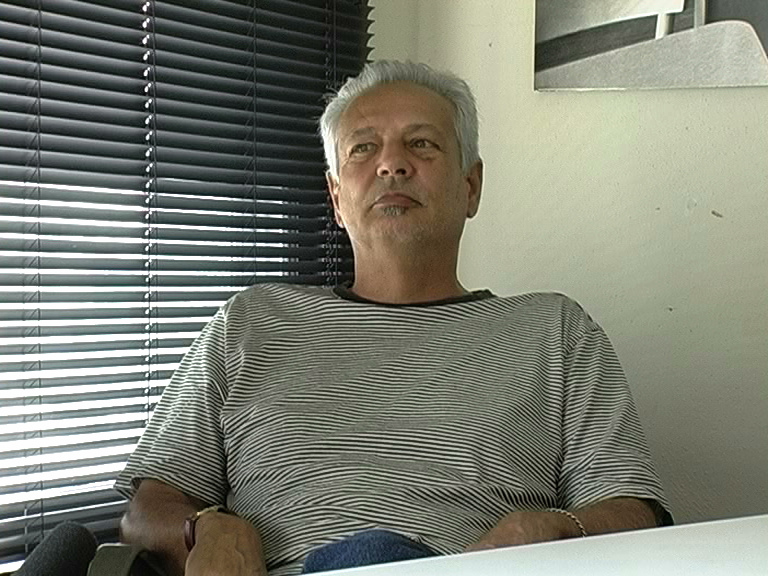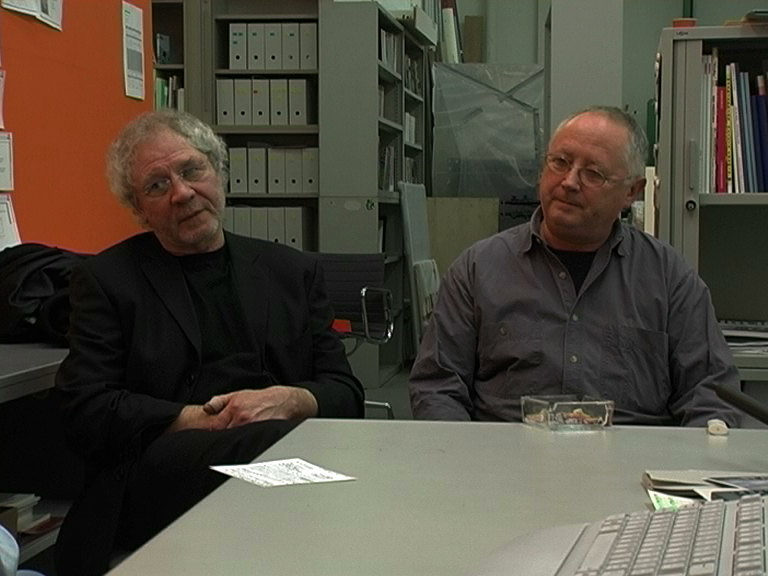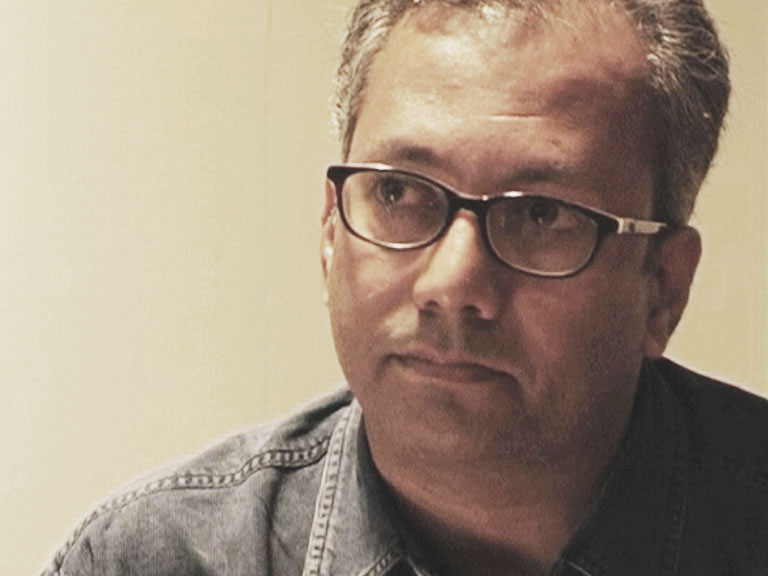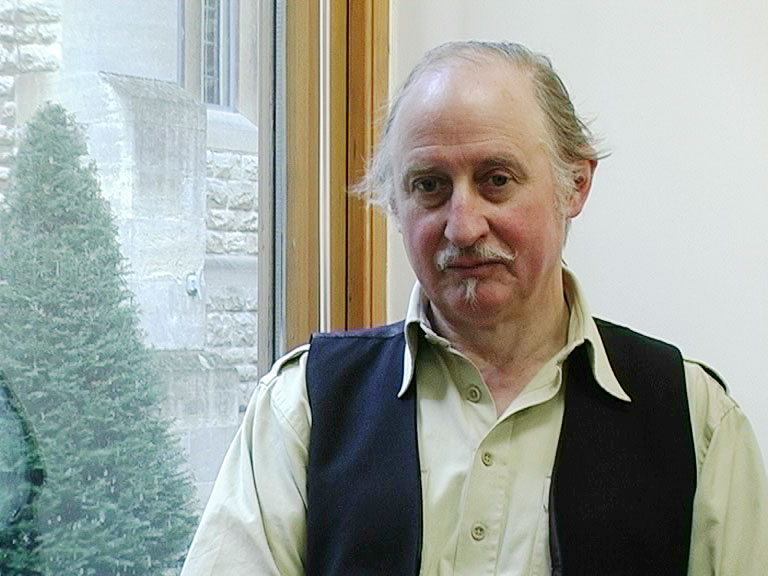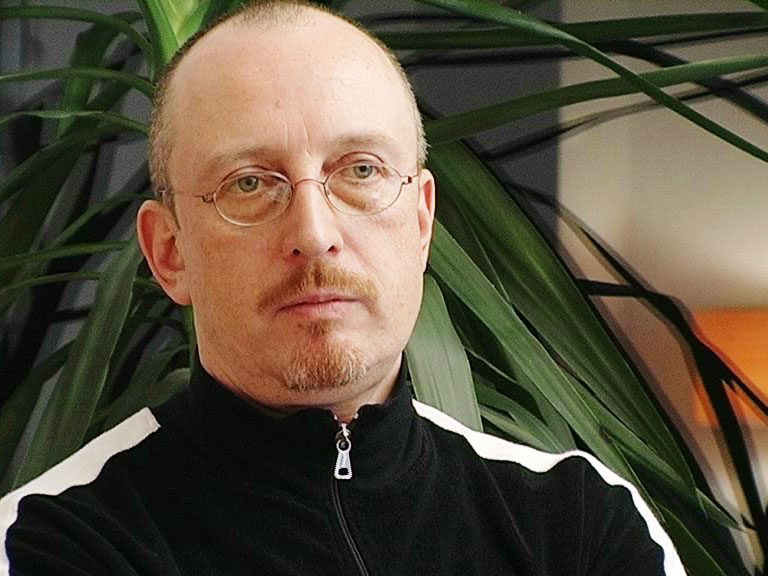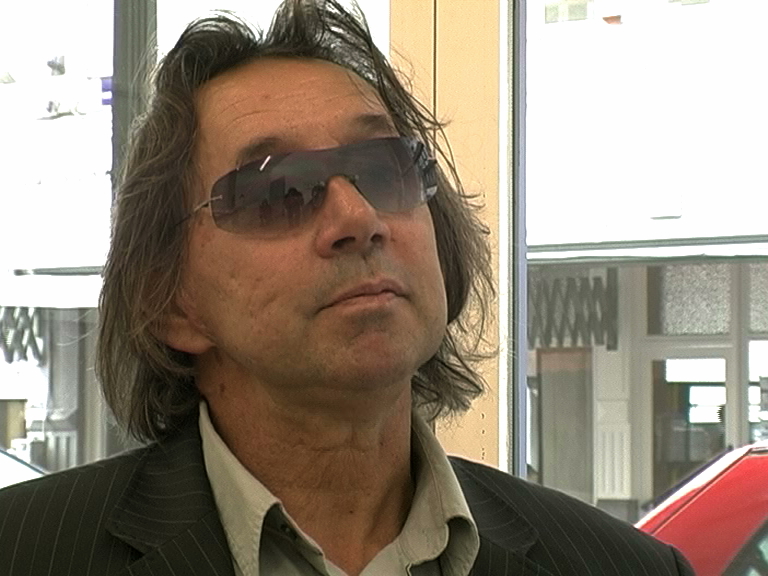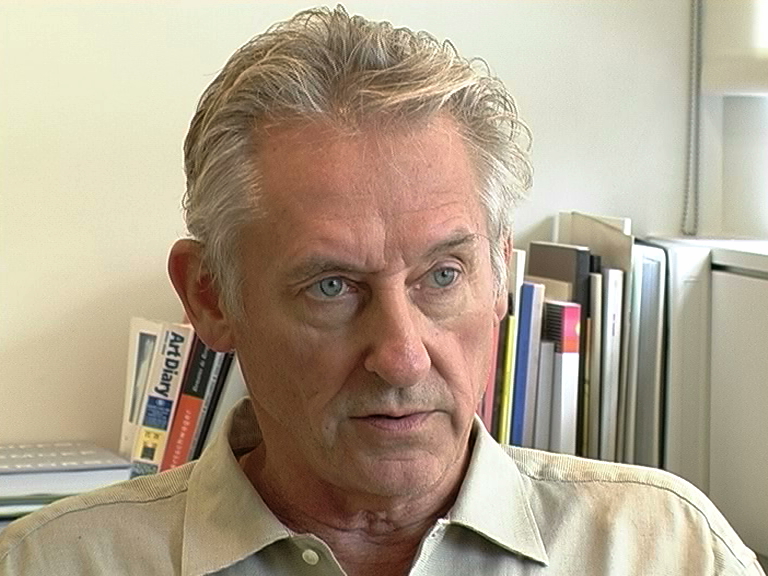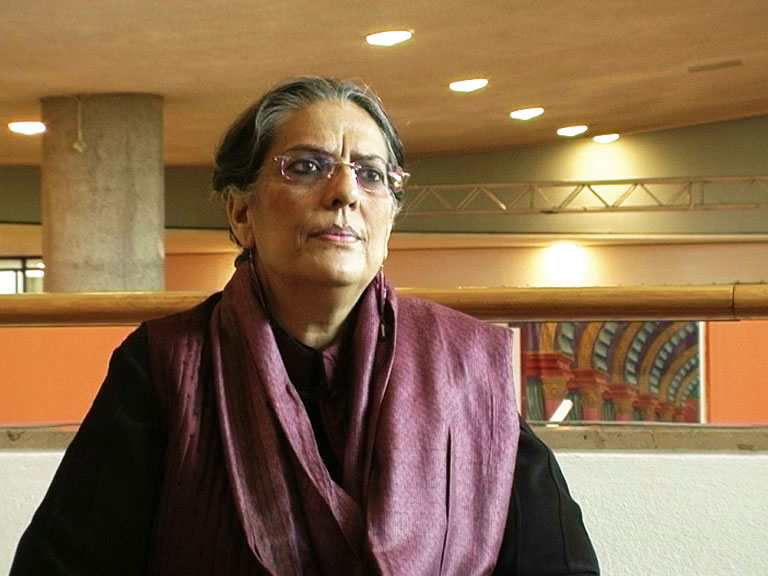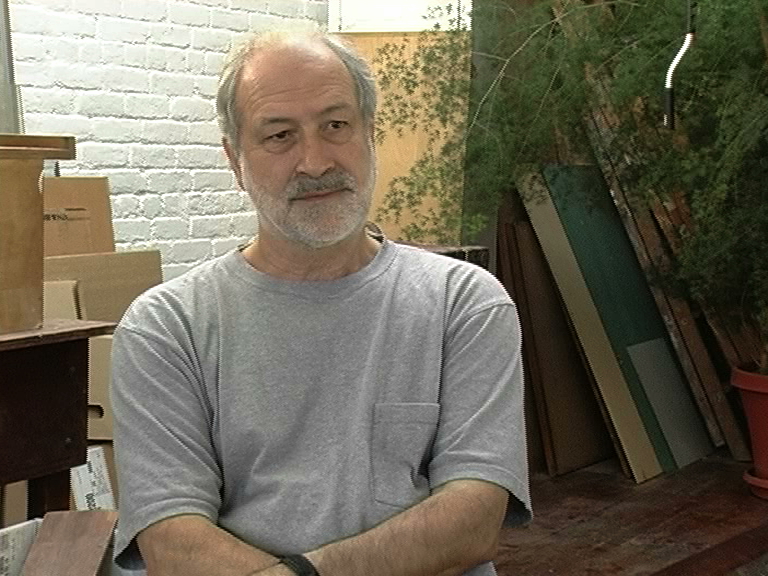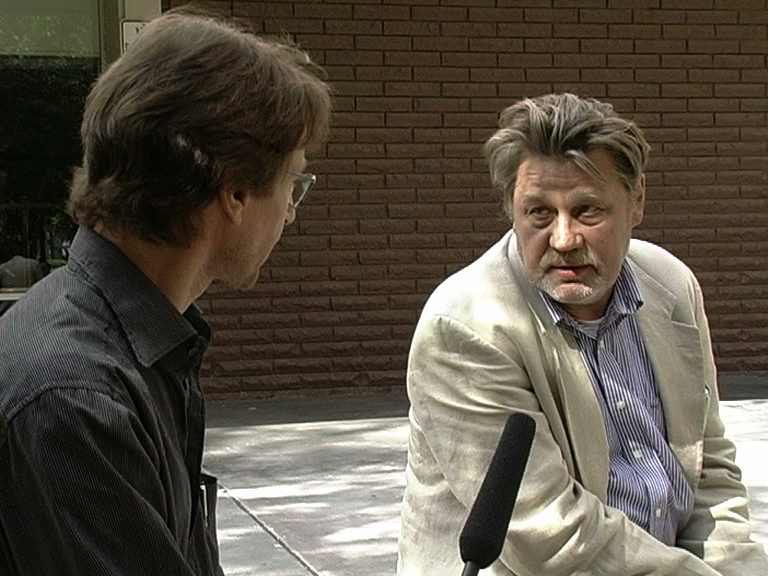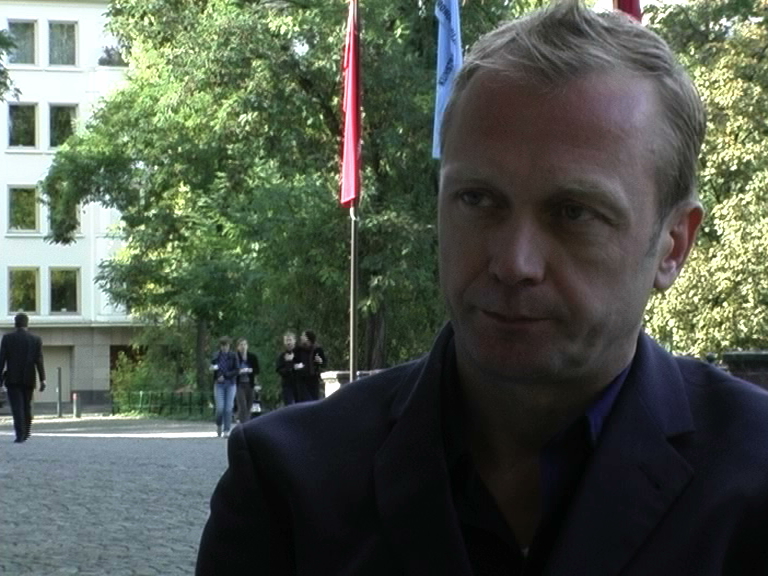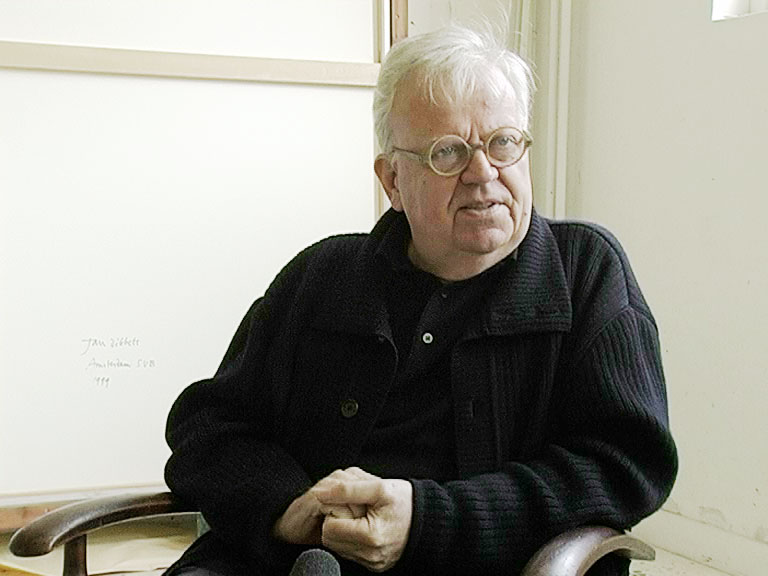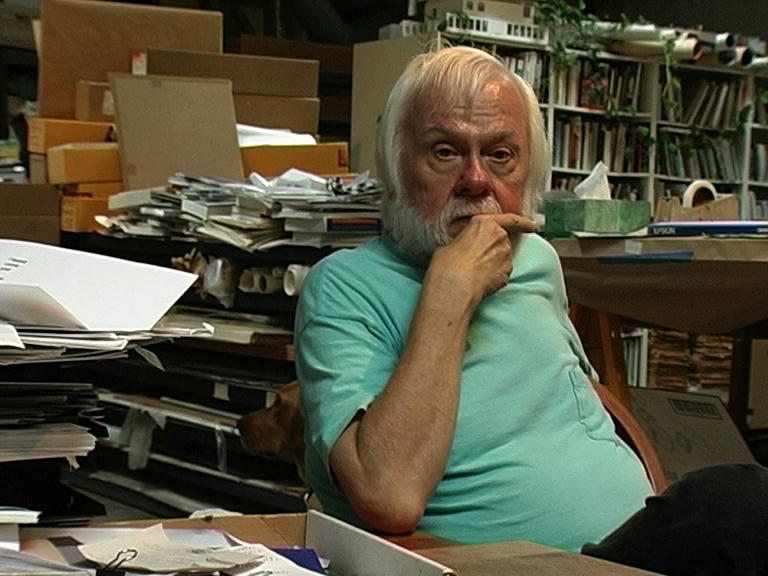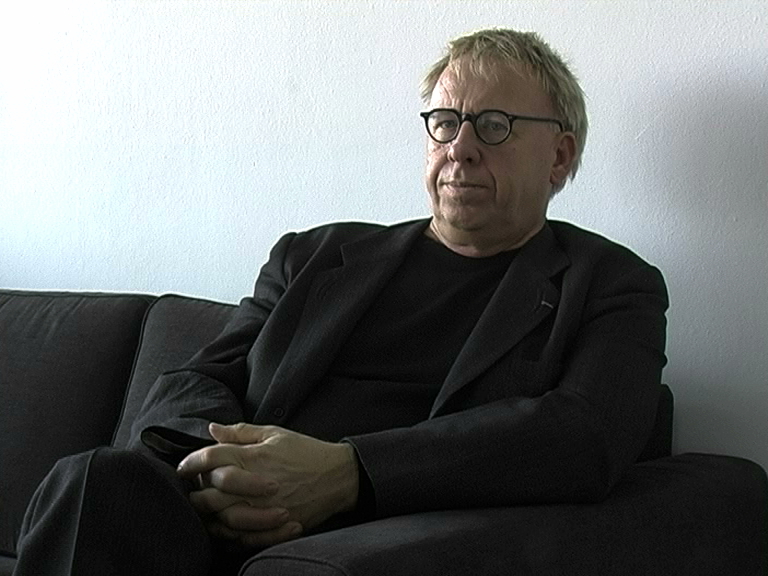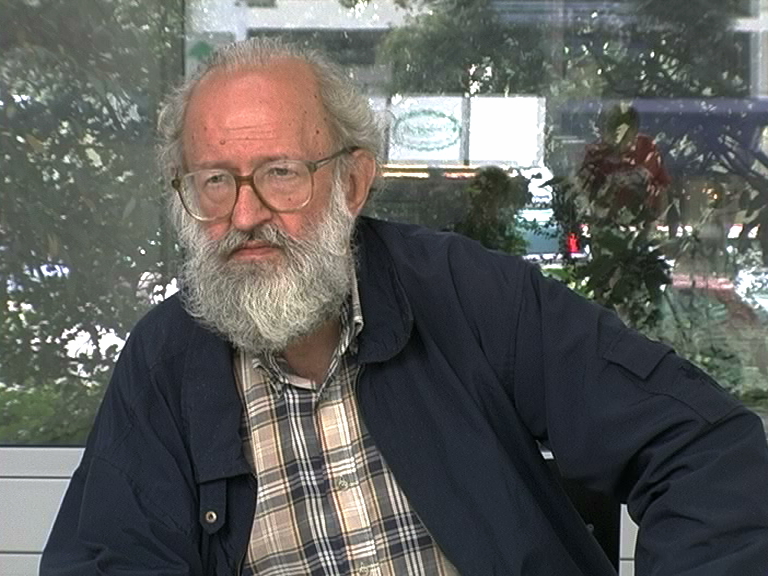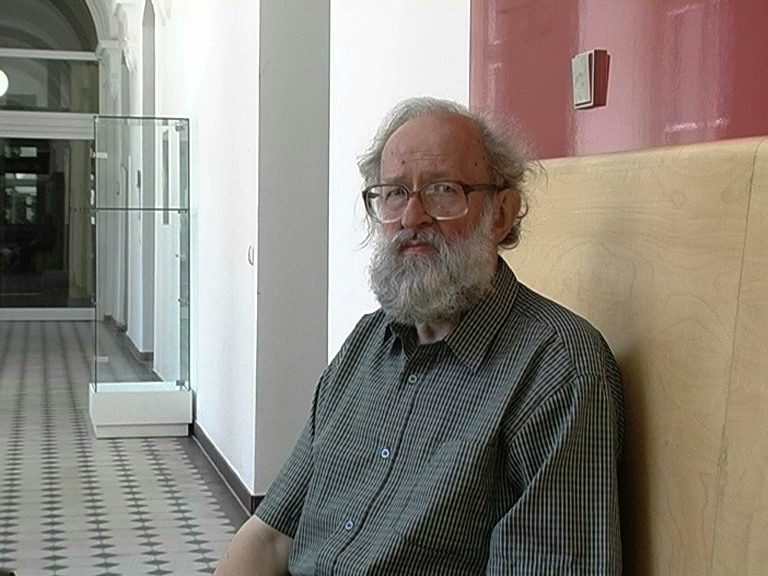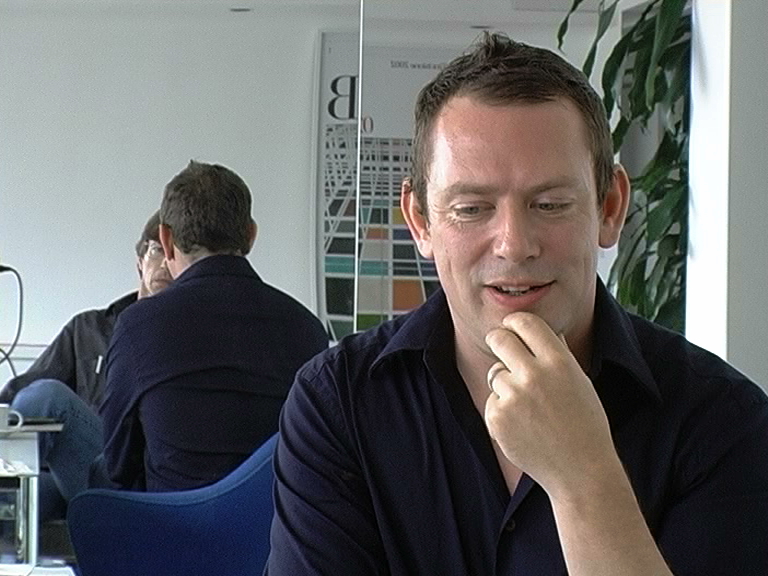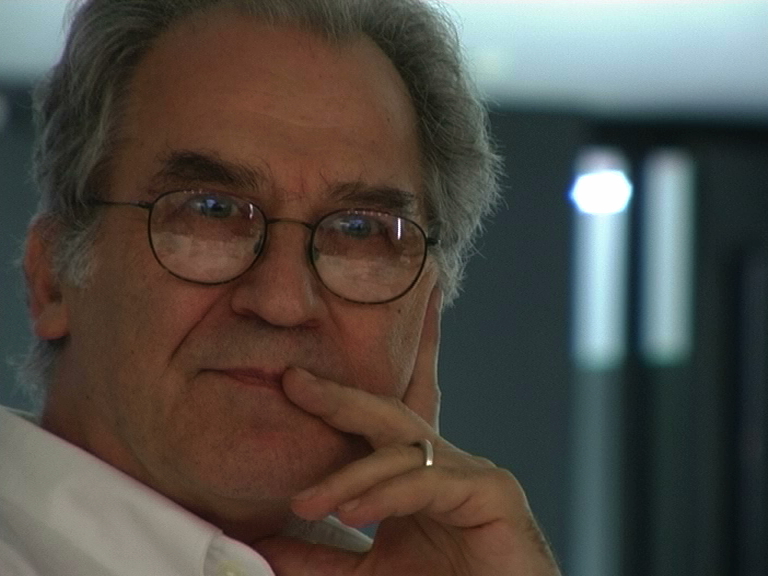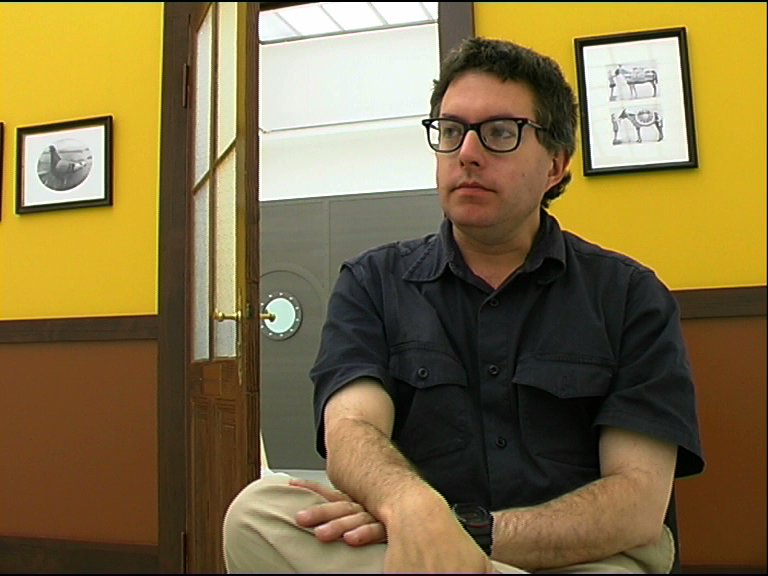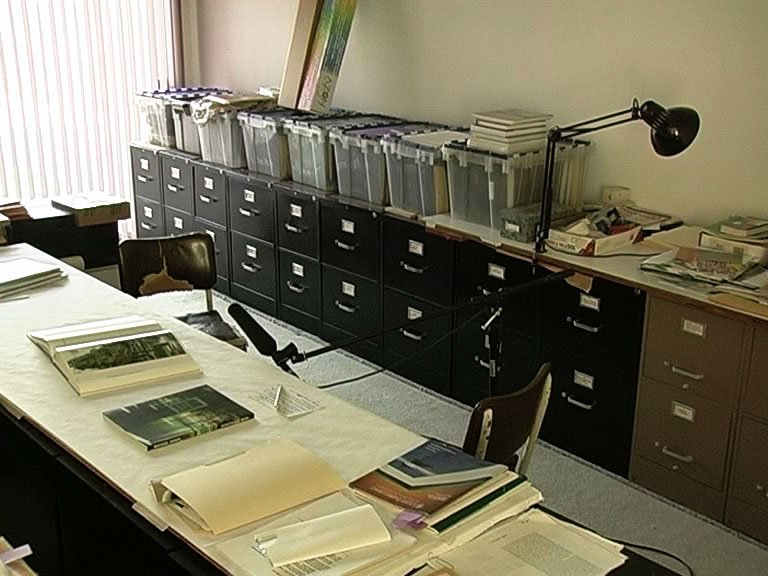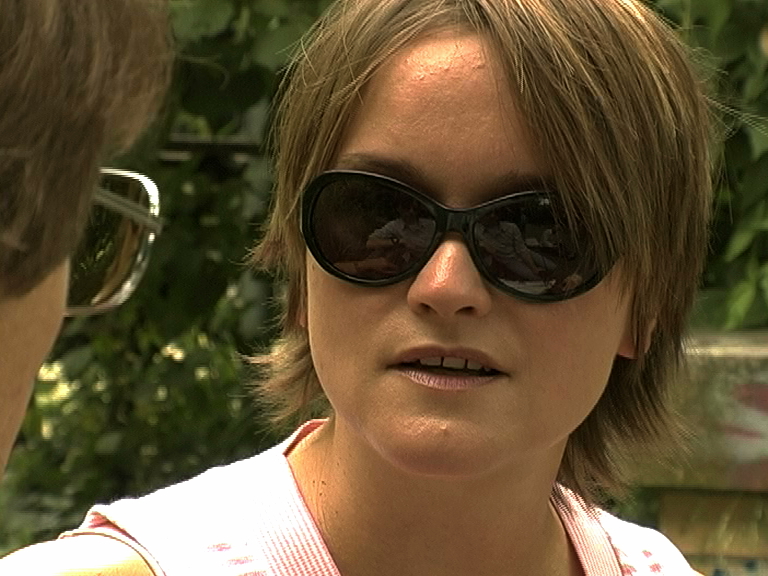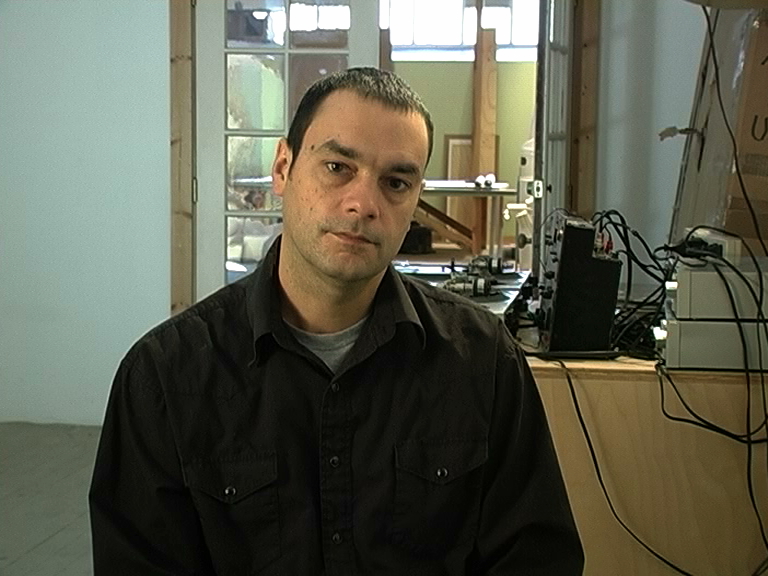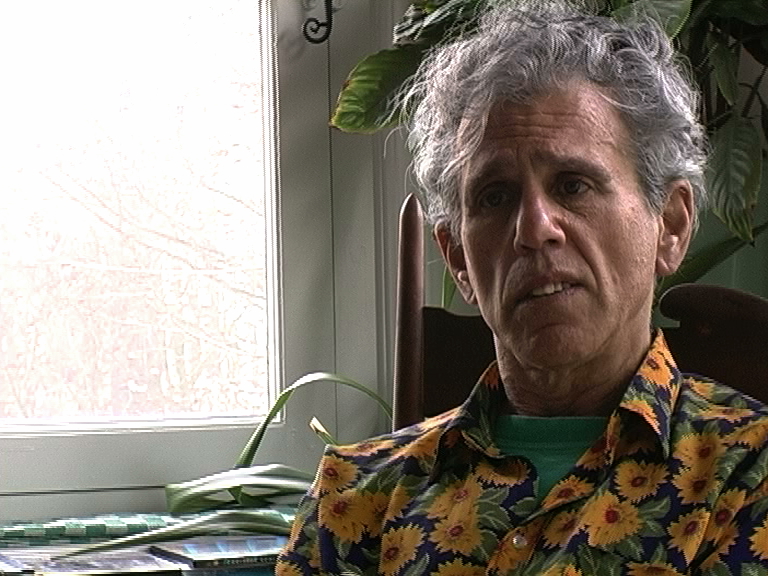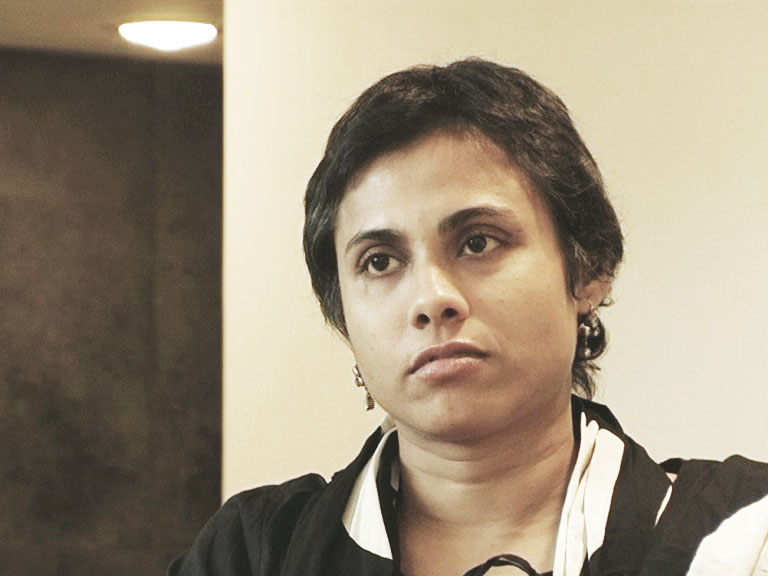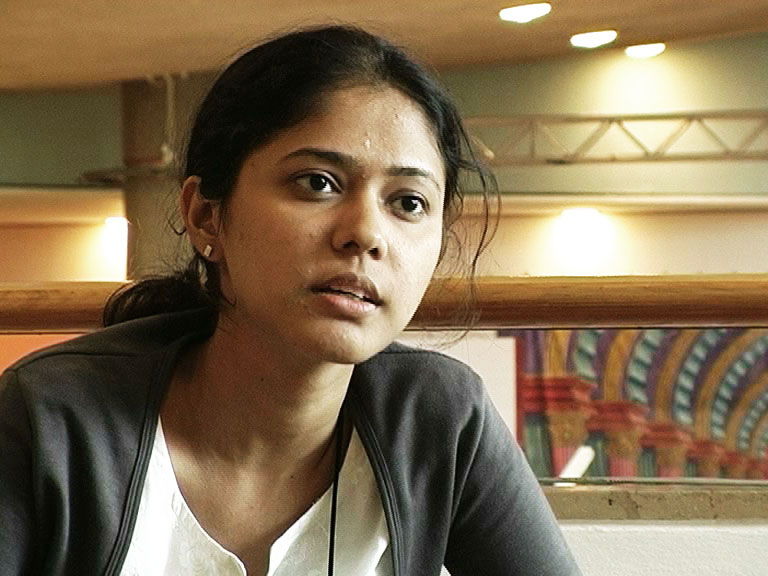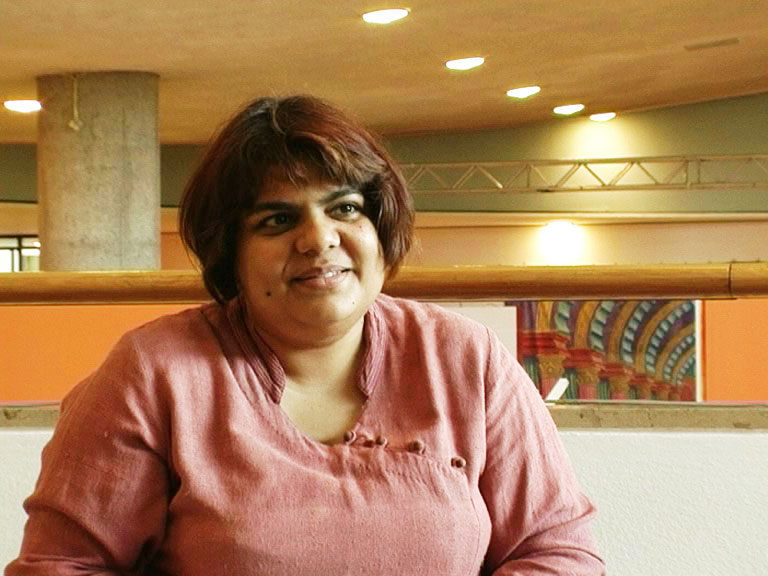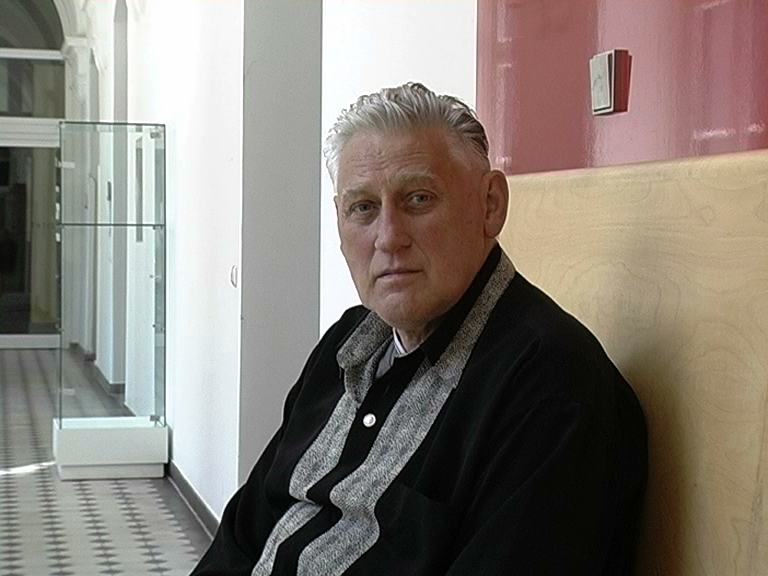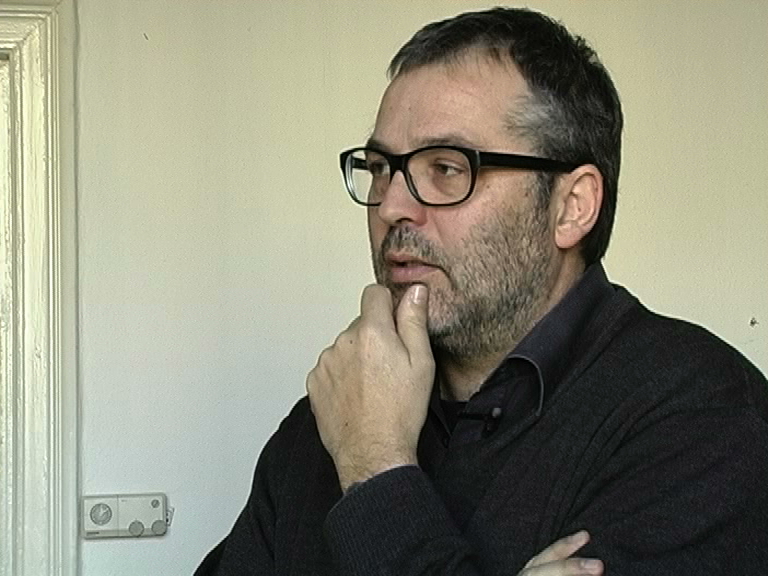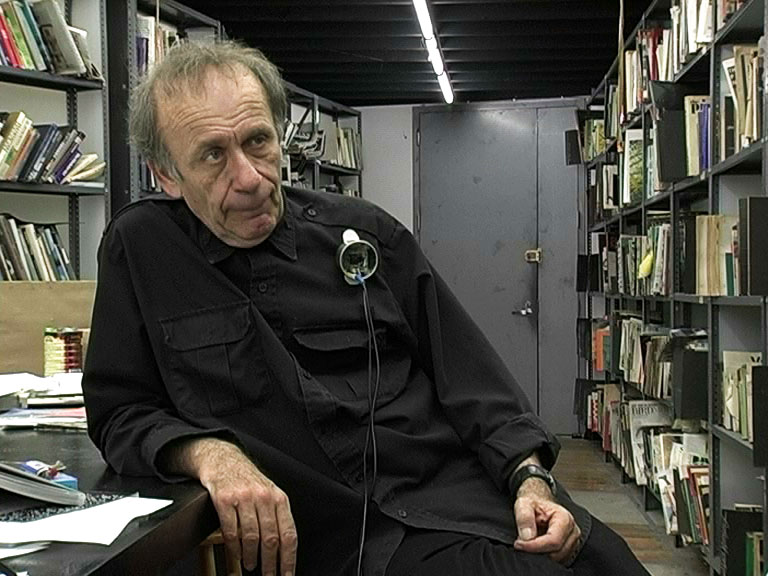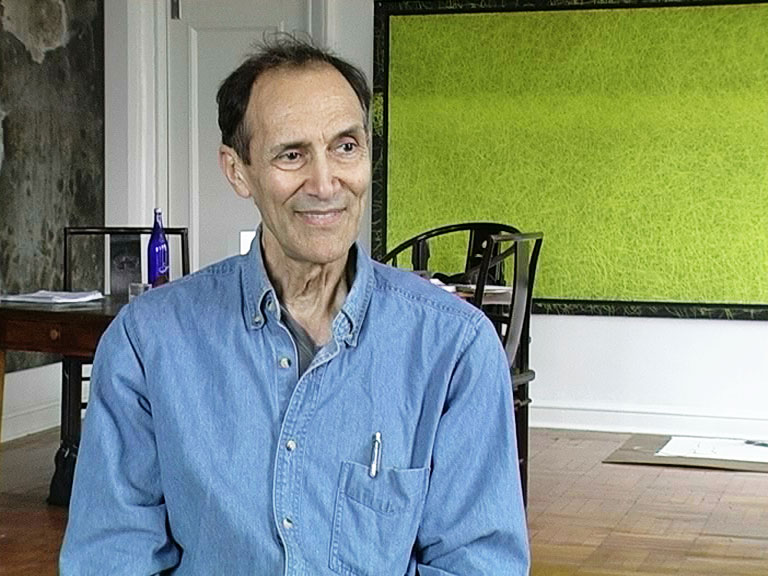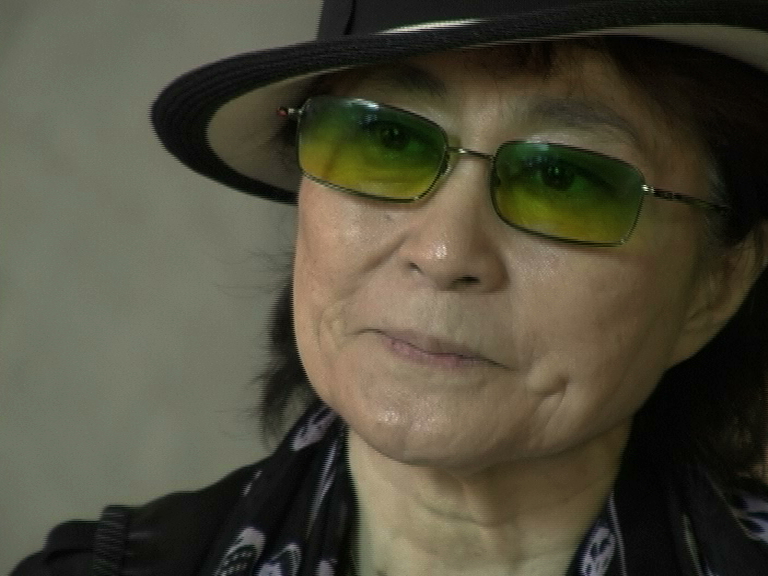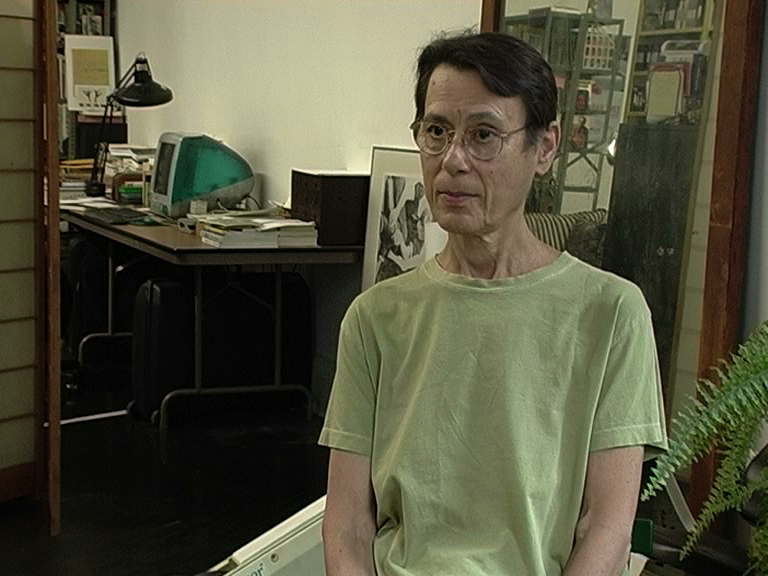S.R.: Some of your works were in the exhibition at Aachener Kunstverein: “What Your Children Should Know About Conceptual Art”. It was very visible that you took very strong references to Robert Smithson. Maybe you want to say something how you came to the point of working with this direct reference.
S.D.: I got interested in Smithson’s work for a magazine project. I think there was a request to do something that referred to historical, either music or art or something like that, and I had been thinking about that „Partially Covered Woodshed“ at Kent State in Ohio, and the fact that it was done a couple of months before the National Guard killed the students at a Vietnam War protest in 1970. So I kind of linked Smithson’s work not only to the kind of political movements and upheaval of that time but also to his pop music references. Neil Young wrote the song “Ohio” which was about the killings at Kent State. And so that’s how I started to use his work as part of this series of associations and connections from that time period.

S.R.: We just saw your exhibition in the gallery here in LA, and I liked your way to work with the different references in the space; how you organized the space. Maybe you want to say something about the images you were using.
S.D.: That work is a kind of continuation of working with historical references but also trying to work with contemporary things as well, to make more clear this relationship between historical moments and contemporary moments. The work kind of came––I mean it wasn’t a clear path. It was a lot of experimentation on the way to getting this thing sort of centered around the act of throwing a stone as a political gesture. I had worked with rocks in different ways in the past, Japanese rock gardens things like this and this relationship between rocks and rock music and stuff. So this was another kind of association that came out of both my interest in political activity in history and also these formal things like using a rock.
S.R.: When I take e.g. the space with the images in front of the mirrors. There are different possibilities of reading these images; they are coming different contexts, historical and sociological. I think I didn’t really get the point of the reflection in the mirror. Maybe you want to say something.
S.D.: Well, I’ve been using mirrors for a while and that came through when I started doing work that was more about Smithson and about other artists from that period in the 60s and 70s, because they were using mirrors. That was the first kind of thing which was a material that was very widely used during that period. I liked it to refer to that, but also to in a sense put the viewer in the work. So signal a couple of things to the viewer. One, that they are part of this process when they are interpreting the work, and the interpretation process for the viewer is kind of a relective one, looking back on history and thinking also about the meaning in the present of these aspects of the art work in question. I have continued to use it because less for the reference to the 60s and more because I think it sets up an interesting situation for the viewer. In the case of the photographs in front of the mirrors my idea was that the viewer would see themselves in the picture. The title of the show was “Involved”. I think I wanted to make a point that we are all part and connected and implicated with what happens in the world. As a kind of gesture against alienation. I think there is a lot of political alienation in the US, there is a kind of disconnection that people feel from political agency, and also a disconnection from these events having meaning for other people. It’s a big country, and people think, well, what do I care, if somebody in the Middle East is something is happening to him, or somebody in Europe, what do I care, it doesn’t affect me. I think my point in some way is to say: it does have meaning, we are part of it.
S.R.: Sorry, when I insist on it. But specifically on this collection of demonstrations, these throwing stones images. I see a little bit the danger or the possibility that it could be read like an iconography of stones getting thrown against police. I was not sure if I got the connection to the contemporary. But it was just my feeling in this space. There was another space. What was the quotation or was it a quotation, I’m not quite sure, in the space where you had the images on the wall and in the middle you have this sculpture made out of a fence.
S.D.: The cage. (Bus)
S.R.: I was wondering: did you write it somewhere or what was the context of this?
S.D.: Let me think, it’s: “Obedience to the Law is Freedom” which is from a sign on a military prison. I think it’s Ford Bragg in North Carolina. It’s a kind of double-edged sword in the sense that it’s both a kind of chilling statement, but if you think about the actions of the Bush Administration in Iraq, you see that he is not acting within the law. So you see a problem with this equation of law and freedom. I think it’s something that goes both ways.

S.R.: The interesting thing in this kind of work is, on the one hand, these more art historical references, on the other hand these references to historical and contemporary political or society relations. You offer a kind of reading that can mean something like a re-reading or misreading. This is a kind of production that came out of reception.
S.D.: The band’s practicing. I go and tell them they have to stop; they’ll play for hours.
S.R.: So I was on this re-reading and misreading. Am I totally wrong when I come with these words?
S.D.: No, I think that’s right. I realize it’s a dangerous strategy in some ways. But I guess that’s what keeps it interesting for me in a way that the work isn‘t, it doesn’t elaborate a very clear ideological position straight away. I think it comes from or it’s interested in certain specific kinds of meanings; I don’t think it’s open-ended but there is definitely room for interpretive play in the meaning of the work.
S.R.: Let me come back to what you said in the beginning that you have an interest in the relation between rocks and rock stars. I saw also in the work in Aachen this interest in the identification between rock star and artist. I think you were quoting form Rosalind Krauss and also from Neil Young and Robert Smithson. What is the focus in this interest. How do you see the function of the artist in society?
S.D.: I think that project was certainly revolving around death, basically, Smithson had a kind of rock-star-death: he died young in a plane crash; Buddy Holly, Lynnard Skynnard. I thought there was an interesting kind of comparison and the subsequent kind of mythification. Smithson’s death is very much like the way rock stars do. So yeah, I was interested in that, and perhaps it’s a kind of allegory for events in the 60s as well, this kind of burning out. I don’t know if this answers your question or not.
S.R.: Yes, maybe I’m continuing with that point when I ask you the first of the more historical orientated questions: What do you consider as your strongest influence?
S.D.: Probably the civil rights struggles and movements for social justice and politically liberatory movements and stuff like that, anarchism. When I was younger I grew up as a child with that, that kind of framework without intellectually understanding it; when I got to be a teenager I got into Punk Rock which was a kind of I thought for young people that was the political kind of expression albeit a very nihilistic one. That really had a big influence on me; particularly that kind of Punk destruction-as-creation idea has influenced my art work a lot.
S.R.: And in contrast to that, what would you say: Which practice in the history of art is your favourite?
S.D.: I guess right now for me Adrian Piper is probably the most important living artist in terms of the history of her practice, what she’s done, the whole thing. She’s pretty amazing. Maybe you ask me the question again.
S.R.: Which practice in the history of art is your favourite?
S.D.: I would say Adrian Piper right now. That‘s something that changes as I change. But her writing and her work, her position, what she stood for over the years is amazing.
S.R.: For me it’s interesting that you say that. (Bus) When I just resume; you said your strong influence was Punk and “Destruction as Creation”––what I like very much, this quotation––, and in the art field your favourite this time is Adrian Piper. I think that many other people take different developments out of the Punk-time; e.g. in Germany I see this time a lot artists who say: In my youth I was a punk but then I turned exactly the opposite. How do you see that?
S.D.: (laughs) I think that’s ever happening to me, unfortunately. (laughs)
S.R.: I didn’t want to identify it with you, just your perspective on this kind of development.
S.D.: It happens. (Bus) I think people do change. I remember reading, years ago there was a really interesting story in a New York magazine about people’s music-listening trends. It was a study done by a trade group for the music industry, and they tracked people, and they found that during each period of a person’s life they have certain tastes in music, and when they get to be 40 they always go back to what they listened to when they were teenagers. It’s a really interesting thing. I guess I’m doomed (laughs) by that. I don’t know.
S.R.: I was insisting on this question because there are circulating a lot of theories––especially in Germany––what happened to the children of the 68-generation. First, what happened to the 68s, then what happened to the children of the 68s, which are identified generally with Punk. It’s not so easy to categorize like that. Exactly in the 90s where everything was mixed up and there were totally different movements and it’s still not so easy to figure that out in that direction. My socialization was also Punk. Let’s come back to your practice. Do you think that you can say something is your goal or the aim of your practice?
S.D.: To make meaning and to work with significant subjects. I guess that the work deal with important issues or subject matter, content that it’d be of some significance, I guess.
S.R.: So that led me to the next question: Joseph Kosuth is still insisting that the responsibility of the artist is the production of meaning. You agree?
S.D. Yes, I do.
S.R. Do you think that the conceptual paradigms––if there are paradigms––are still in function?
S.D.: I’m not sure if I understand exactly what you mean, but I guess I would insist on a definition of art as being a form of production that’s different from all other forms. In other words, I think art can do things that other forms cannot do, and vice versa, other forms can’t do the things that art does. For instance if you are interested in a project that’s more appropriate to entertainment or if you think that art should be more like entertainment then rather than making art you should go into the fields of entertainment because they do it better, or media, certainly it depends on what you want to do. But I think art is a place where you can deal with significant issues, subject matters in a way that gives the viewer a space to kind of contemplate that, to reflect on that, think about that, perhaps open up a new way of thinking about those issues. I don’t know if that’s what you meant exactly. I mean Kosuth is really interesting. Some of the things he said in that early essay “Art after Philosophy” are really interesting. Particularly the idea that art works should live historically through their use by subsequent generations of artists and not become institutionalized which I think is really interesting. My practice certainly reflects that, and I think a lot of artist my age as well do that.
S.R.: I want to go a little bit further or maybe you can explain it a little bit more about the relationship that you are projecting in your work. How do you see the ideal components in the receivership of the information that you give with your works?
S.D.: Well, that’s something I struggle with. Because I think there is a lot of information and necessary to understanding the works. There’s a lot of references in the work, historical, art historical and so forth. I struggle with that, about how much information to include with the work. One of the things I try to do is use other forms. The longer you make art the more there is a kind of critical body of writing and discussion and discourse around the work, and I think that helps. I try to include materials in the shows that give information that might not be evident to people. At least a lot of people, if they are interested, to do their own research. If the work is interesting enough maybe that would prompt them to for themselves to continue researching on their own and looking at sources and so forth. It’s funny because I’m a Post-Conceptual artist, if you can say such a thing. Mike Kelly used the term Neo-Conceptual, and I didn’t want to do Conceptual art. There are a lot of things when I was younger I didn’t want to be an Appropriation artist, I didn’t want to use photography in the way that Sherrie Levine or Richard Prince used it. I didn’t want to do conceptual work the way Asher, Buren or Haacke had done it. There was a kind of I think my practice is more hybrid kind of thing, where different strategies from different moments were used. Sometimes it works, sometimes it doesn’t. (laughs)
S.R.: Maybe I’m coming back to one term that seems to be interesting: How do you consider the term of “Sampling”. Sampling which is something like a transgression from music to the cultural field, especially since techno culture, since 15 years. Do you feel familiar with this term of sampling?
S.D.: Yes, I do. I think my style is closer to Appropriation than Sampling. I think there is a bit of a difference in that. The way I think of Sampling is, what’s being sampled is removed from it’s context, totally, and used as a kind of formal device more than as a piece of content. I think I tend to use more of the context. If I’m sampling something or appropriating something I’m interested in using that point back to its original context. And I think there is a difference, a significant difference. It’s actually a really good question, it’s something I’ve thought about a lot. Someone wrote a piece about my work in one of the catalogues, Kevin Young, and he called it „cover song“ or „cover story“, which I thought was really interesting; he specifically didn’t refer to Sampling but referred to doing a „cover“, like a „cover song“. So you take the whole thing rather than just a little piece. Which I thought was a really interesting insight.
S.R.: I understand because the cover version always takes in full consciousness the reference to the former version and it’s still also only a version.
S.D.: Exactly.
S.R.: If I understand it right, you want to emphasize the reference.
S.D.: Yes.
S.R.: And it’s very important for you to have this relationship of communication to a former work or a former practice.
S.D.: Yes. When I use music in the sculpture I think of the music in a visual way. The piece of music refers back to it’s original context. It’s not about a kind of entertainment, it’s used for a specific reason. It’s an appropriation really.
S.R.: Maybe one more question about the different forms of presentation. Sometimes you have installative or sculptural works which are more––I don’t want to say interactive, but as a user or as a viewer, as a visitor, you can have an effect on it, like the work you showed in Aachen.
S.D.: The theatrical flock comes out the.
S.R.: How do you see the relation or the contrast between images on the wall––where you already said that you are using the mirrors to involve the viewer––and this other kind of installation?
S.D.: I think I’m interested in using whatever formal method would seem to best suit the idea. I pretty much use every form (Bus) I tend to use whatever formal method (Bus) seems to best suit the idea. If it’s a photograph or a drawing or a sculpture or if it’s a kind of interactive sculpture like in the case of the proposal for a monument in Friendship Park, where you actually go up on––it’s an architectural setting and you go up and play records, and it’s a very theatrical, interactive thing. I like to keep all the options open. Discuss each piece on its own terms in a sense. If it’s a drawing of a photograph, then what does it mean to make a drawing of the photograph. If it’s photograph on a mirror, what does that mean. The questions exactly that you asked me which were about the specific works. I’ve always resisted that idea that artists should work in series and maintain a kind of recognizable style. I have no style. (laughs) I guess, that’s a style in a sense. (laughs) After a certain amount of time everybody has a, there comes to be certain traits that one can identify. I would say, if anything, I do everything but painting. (laughs)
S.R.: I’m interested in that term of style because up to the 80s, maybe still for some parts of the art market the signature-style is very important to produce something like the recognizable image as you said. In that kind of practice that you developed maybe it’s too complex to carry with you something like a recognizable image that is working in the image. Is it allowed or is it possible to say something like your style has more the form of communication, that you try to involve the viewer in this kind of reference to an earlier practice?
S.D.: Yes, that’s true. I tend to appropriate recognizable aspects of art historical moments. Yes, there is a kind of formal framework that one would understand––that the viewer would understand. It’s not the foregrounded thing but it’s something that enables the viewer––as you say––to enter into the work. It’s not a resistance. It’s something that’s easy for people to step into and begin to deal with the meaning of the work. That’s one of the things I was conscious of early in my career, particularly looking at an artist like Mike Kelly where you could see that he was dealing with really difficult subject matter, taboo, transgression and so forth. But doing it in a way that formally was very rigorous. He built a kind of distance in the material by the way he structured it formally. So the people would approach the stuff without just saying: this is ridiculous. So that you could see that there was something serious being done there, with the content of the work. I think he is brilliant at that, actually.
S.R.: Maybe better in his earlier works––it‘s a question. (laughs)
S.D.: It’s funny because he lives down the street, and really I haven’t seen his work in ages. It’s everywhere but here. So that‘s what happens in LA. There’s not a lot of opportunities here. Everybody is showing somewhere else.
S.R.: We wanted to meet him but he has no time.
S.D.: He’s working on a huge project.
S.R.: Maybe let’s come to the last question which is a complex of references. You are working––as you talked about––with many different processes and different practices––from sculpture to photography, specific kind of photography, from drawing to interactive installations. It‘s more a personal question: What is your ideal typical daily work as an artist? Do you have a preference?
S.D.: No, I don’t have a schedule at all. Really, every day is different. The days when I’m teaching, I’m doing that, and but it’s mainly just, increasingly it’s more a kind of developing, doing research and developing conceptual ideas in the work, and less about actually making it. But I still make a fair amount of the work myself as well. It just depends. It’s kind of nice: every day is different. (laughs) I used to think I would be one of those people that would have a schedule, do this for a certain amount of time every day, but it doesn’t work out that way. The demands of the way I work, there’s just a lot of different things to do. It’s not about getting in the studio and working on a painting or a sculpture, there is just so much more than that to do.
S.R.: The question is a little bit romantically driven because some artists have something like an ideal projection of sitting somewhere drawing or reading.
S.D.: Yeah, whenever I can. (laughs) It doesn’t happen. Mostly it’s just running around starting fires and putting them out.
S.R.: We went through a lot of different themes and issues of your work. We have a little bit space if you want to say something in relation to your work that comes from your heart or your stomach.

S.D.: I guess I would say that I’m just really interested in the specificities and less and less interested in generalization. Like even to say, recently there’s been a lot of attention paid to so-called political art. I think all art works are political, and it just depends on whose interest they are serving. I think the important thing is to be specific, to look at each art work and deal with it critically on its own terms, you know, as opposed to extrapolating some general notion from that. That’s what I would say.
S.R.: That was a very important thing because I have the feeling that in the last time, especially in Germany, always watching the things,, the so-called political art developed to a very formal issue, that it’s always––or very often foregrounded that there is a political issue. Then you very slightly drift away from a specification of the perspective of a reference. Sometimes it’s only something like a reference to a field, very vague, very unspecific. And so I think that was very important to say at the end. If we are finished so far, we continue small talking, whatever…
S.D.: It‘s important to talk about the work in a critical way.






